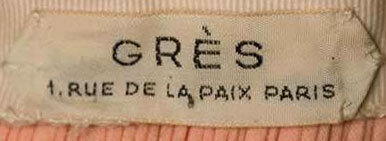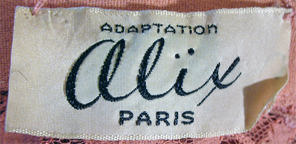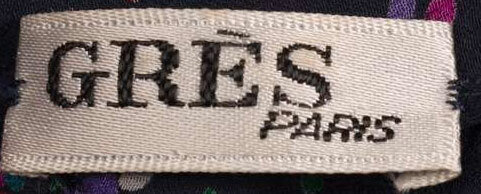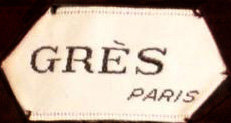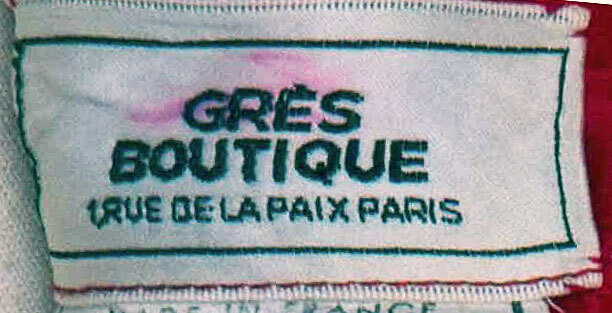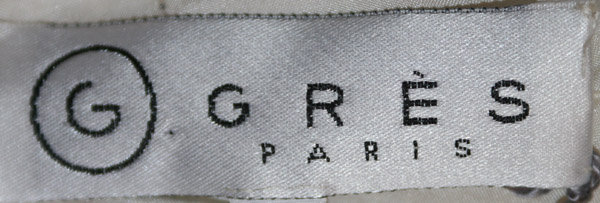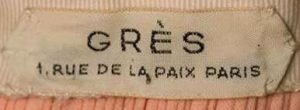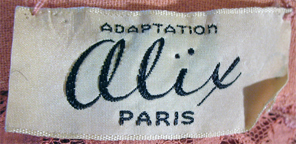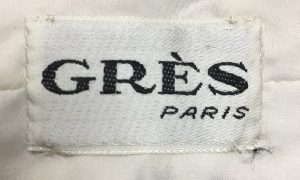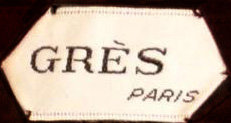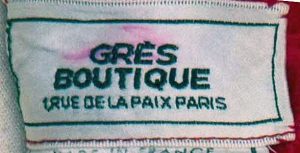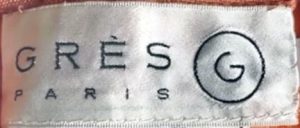Madame Alix Gres was born Germaine Emilie Krebs in Paris in 1903. She began as a sculptor, but never had a fruitful career. Frustrated, she began to design toiles for a design house in Paris. That’s when she decided to try her hand at fashion design.
She opened her first house under the name Alix Barton. She designed silk jersey dresses, with simple lines and draping, and began gaining some publicity in fashion magazines. Her house was simply named “Alix”.
Her training as a sculptor influenced her clothing designs. She once created a dress modeled after the Louvre’s Nike of Samothrace. Alix created many of her gowns from silk jersey which she draped and pleated and cut on the bias.
In the late 1930s Alix married Serge Czerefkov, sold the rights to the name Alix and adopted Gres from her husband’s first name, spelled backwards.
By the time WWII hit, Madame Gres had become a world famous designer. Even though she was Jewish, German soldiers asked if she would design dresses for the wives of German officers. She refused and they closed down her design house.
After the war she began creating her famous Grecian pleated dresses. Some of these dresses took 300 hours to make. Each pleat was done by hand and had to measure more than 1 cm. wide. The Grecian style dresses were made of one or two pieces of fabric. She draped the cloth over the model and “molded” the design over the body, so the body gave shape to the dress, not the other way around. The dress of the first label here was made of two pieces—the body and the shoulder.
In the 1950s, she began tailoring women’s suits. She continued to make her gowns into the 1950s, 1960s and 1970s.
Gres launched a fragrance line, but had to sell it to keep her couture going. The woman who demanded the finest quality and attention to detail had to take the step towards ready-to-wear clothing in the 1980s.
In 1987 the house went bankrupt. The name was bought by a Japanese fashion distributor and it became wildly successful in Japan. The present designer Koji Tatsuno pays homage to Madame Gres by continuing the draping style in a more modern way.
When the house went bankrupt, many of the patterns and samples were destroyed. Madame Gres died in 1993 in obscurity.
Written by debutante clothing

